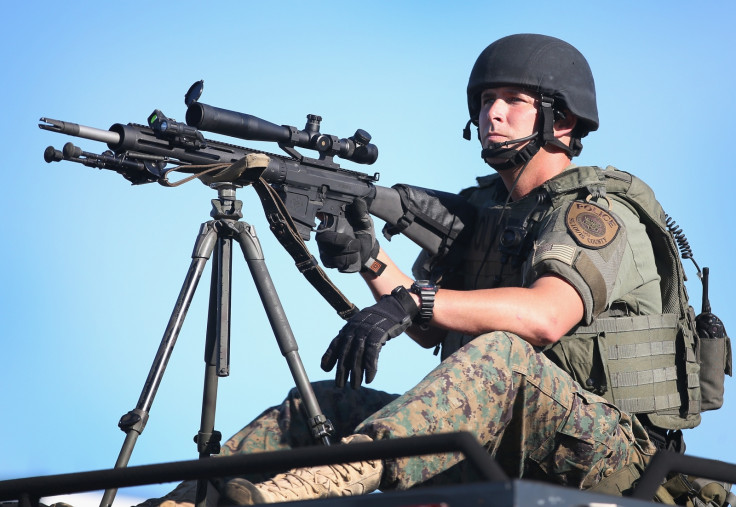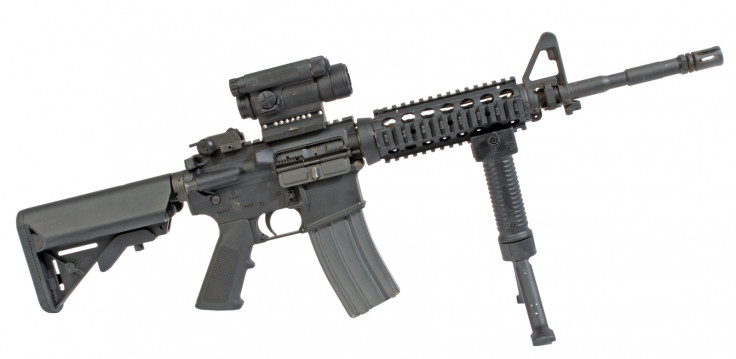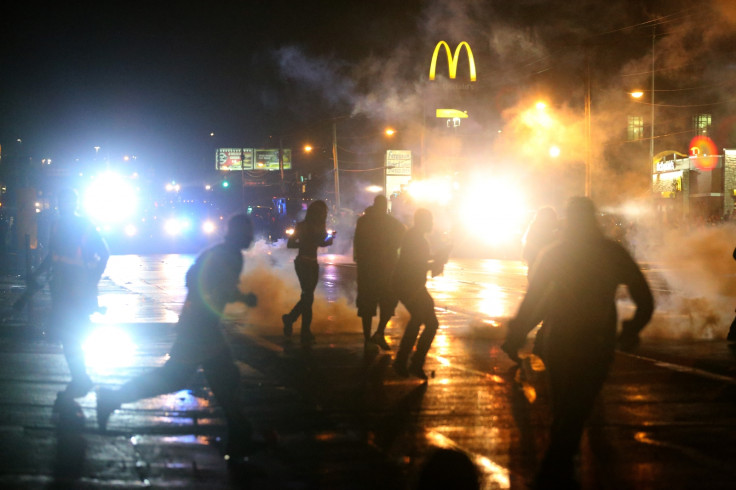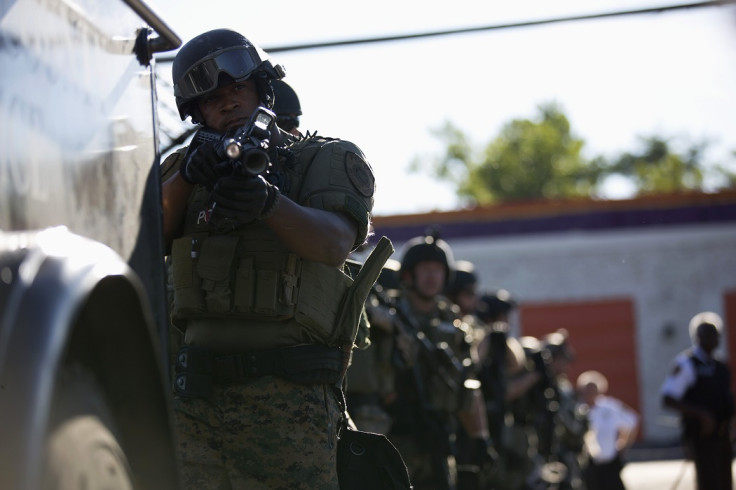Ferguson Shooting: Missouri SWAT Teams Armed with M4 Assault Rifles

The aftermath of Michael Brown's fatal shooting in Ferguson, Missouri, has brought worldwide attention to the militarisation of local US police forces.
Since the War on Terror began, US police forces have been encouraged to stock up on equipment that is seems to be better suited for use by frontline troops in warzones.
That's because it is.
Since 1997 the US Department of Defense Excess Property Program – usually known as the "1033 program" – has been providing "surplus DoD military equipment to state and local civilian law enforcement agencies, for use in counter-narcotics and counter-terrorism operations, and to enhance officer safety."
Since 1997 Program 1033 has handed $5.1bn (£3bn, €3.8bn) worth of military equipment to US police forces: $499m in 2013 alone.
According to the Missouri Department of Public Safety's website, the equipment Program 1033 supplies is usually benign: clothing, laser printers, computers, drink canteens, are common items, along with the occasional aircraft, ambulance or four-wheel drive vehicles.
But the equipment seen in use by Ferguson's SWAT teams is far more menacing, and could be fuelling the deterioration in relations between the town's police force and its residents.
Lenco BearCat
This vehicle, made by Lenco Armored Vehicles is a bullet and bomb-proof van, used to patrol streets in Fallujah during the Iraq War. But now about 500 are in use by US police agencies.
'BearCat' is an acronym which standing for 'Ballistic Engineered Armored Response Counter Attack Truck'. But US police forces prefer to describe these intimidating trucks as "armored rescue vehicles" rather than "counter attack trucks".
A BearCat's chassis is made of half-inch thick steel, its windows are made of glass that can withstand multiple shots from .50 calibre rifles, it has blast-resistant floors, gunports, a roof turret, and can be equipped with extras like spotlights, battering rams, lifts, and tear gas hoses.
And the BearCat is not just bombproof: it's also chemical, nuclear and biological weapon-proof too.
M4 Carbine

The M4 carbine assault rifle family is the workhorse of the US infantry. Based on the M16 rifle made famous in the Vietnam conflict, these rifles have been in service with the US military since 1982.
In 2012 the US Army began replacing the original M4 carbines the new M4A1 variants, with the intention to replace all the M4s in use by the military.
Under Project 1033, law enforcement agencies can request the surplus M4s by filling in a simple form. All that is required is for the agency to justify the need of the rifles.
The models the Ferguson police have been seen with have telescopic sights that allow shooters to hit single targets at 500m, and have 30-rounds magazines. Ferguson's SWAT officers carried six.
This level of armament was seen as excessive, even to veterans of the US military.
@CombatCavScout @PrivateSnuffy @PaulSzoldra We rolled lighter than that in an actual warzone.
— Broken Handmic (@13F2PL7) August 12, 2014
Tear Gas

While the use of tear gas (or CS gas) is banned in wars, it is widely used by polices worldwide for riot control, as it can disband crowds and disable violent mobs.
Canisters of the gas are thrown into crowds. When the gas is breathed in and comes into contact with unprotected eyes, it causes mucous membranes to be irritated: people cough, sneeze, cry, suffer intense pain in the eyes, and can be blinded temporarily. The gas can also cause chemical burns.
While tear gas is classed as a non-lethal weapon, its use still presents a high level of risk – especially if its victim has respiratory illnesses. Up to 7% of tear gas victims require hospital treatment, mainly due to damage to their eyes and impaired breathing.
Police in Ferguson were accused of using this chemical weapon unnecessarily, including throwing grenades at TV journalists from Al Jazeera.
Camouflage uniforms

But one of the most dangerous aspects of the Ferguson police force's equipment may not be the weapons: but their uniforms.
Ferguson SWAT teams wear military camouflage combat uniforms similar to those used the US Marine Corps. This means this police force no longer looks like police: they look like soldiers.
These fatigues, combined with helmets, black sunglasses and gas masks, can actually make policing Ferguson more difficult, but increasing the chances of violence from the protesters.
Norm Stamper, Seattle's chief of police during the 1999 World Trade Organisation riots, told NBC: "We need to see people's eyes and we need to see people's expressions."
"When it's all hidden behind a military presence — like a Kevlar helmet — people aren't going to see the face of that officer," said Stamper, who has a PhD in leadership and human behaviour. "Citizens, in effect, depersonalize their police officers for very understandable reasons."
Once protestors stop seeing police officers as people they can have a dialogue with, but an occupying force, their behaviour is more likely to become aggressive. This can lead to the officers feeling more under threat, and responding more aggressively
But the problems don't end when police officers remove their military gear: "Even when a cop is no longer in that military garb, when they go back to their basic working blues, they don't turn it off.
"They may, in fact, find themselves behaving the same way they did when they were in that military uniform. That's a major concern I have," Stamper told NBC.
© Copyright IBTimes 2025. All rights reserved.





















